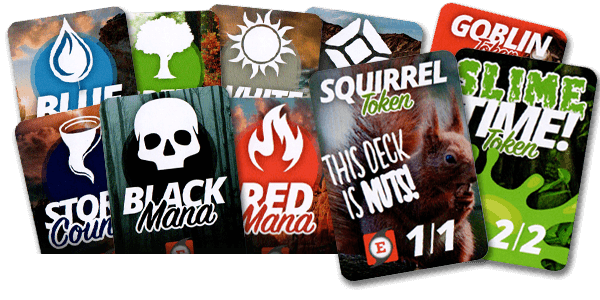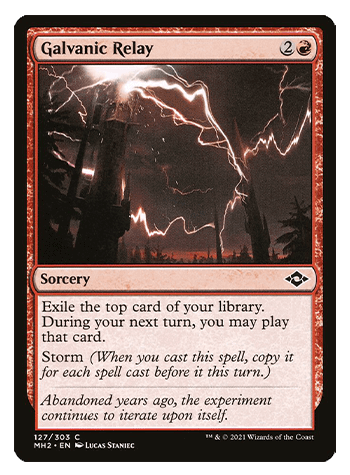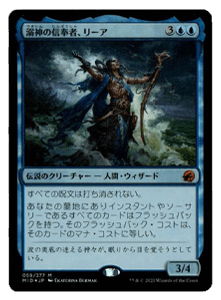Special Guest


Tse Shuen Wan (@LynnChalice)
Tse Shuen Wan, better known on MTGO as LynnChalice, is a Singapore born software developer based in Toronto. Shuen has devoted a large portion of his time in Legacy brewing and piloting all flavors of blue control. Despite being somewhat of a newcomer to Legacy, Shuen picked magic up as a hobby during Time Spiral block and spent many years playing Modern and Commander. Nowadays, aside from enjoying Legacy, he spends his free time listening to Kpop and playing the Piano. He has a handful of Challenge Top 8s with an assortment of control decks, GW Reclaimer and more recently GW Depths.
Special Guest


Jason Murray (@jasonkmurray)
Jason is a longtime Magic player who became dedicated to Legacy in 2016. After starting with Revised, he foolishly traded away his 5th grade Magic collection for Star Wars cards and regretted it years later. Initially a Merfolk player, Jason has played a variety of decks in the format, but has focused on Death & Taxes and Dark Depths strategies in recent years.Jason has an Eternal Weekend Top8 in 2019 with BUG Depths and MTGO Challenge Top8s with BUG Depths, Death & Taxes, and GW Depths.
Jason has appeared on ChannelFireball in video about the Yorion Death & Taxes deck he designed, as well as on the 90sMTG Twitch & YouTube channels. You can find him on Twitter talking about Magic, advertising & design, and Boston sports teams.
Shuen:
I think the deck fills a niche. GW Depths is a slow combo deck powered by a series of green midrange cards between [[Elvish Reclaimer]], [[Sylvan Library]] and [[Knight of the Reliquary]]. These engine-threats are able to independently function as alternative win-conditions when you are unable to execute your combo. Consequently, the deck is able to heavily cannibalize a large majority of its non-blue counterparts while retaining a reasonable matchup against [[Delver of Secrets]]. Like Lands, we have a symbiotic relationship with Tempo strategies since their dominance heavily suppresses the popularity of fast combo decks we would prefer to avoid.
Jason:
GW Depths is a resilient midrange combo deck that is well-positioned in the current meta. Depths decks can often exert incredible pressure by presenting the threat of combo and force the opponent to respect an end of turn [[Marit Lage Token]]. While black-based Depths decks are looking for discard to clear the way for a lethal attack, GW Depths can deploy powerful proactive threats like [[Elvish Reclaimer]], [[Knight of the Reliquary]], [[Sylvan Library]] and [[Field of the Dead]] all while maintaining the threat of an end of turn 20/20.
While the inclusion of these cards dramatically improves many matchups that traditional BG Depths and Rainbow Depths struggle with like Lands, Maverick, and Death & Taxes, it comes at the cost of surrendering the speed and disruption that are critical against fast combo decks. The inclusion of [[Bojuka Bog]] gives all Depths deck game-one counterplay against graveyard decks, but other fast combo decks will present a challenge for GW Depths.
Shuen:
[[Mox Diamond]], [[Green Sun’s Zenith]] and [[Crop Rotation]] are our best cards pre-board. We have almost no relevant interaction outside of [[Wasteland]] so none of the midrange engines are particularly good. Velocity is key so any way to get ahead on mana or lands for a quick combo kill is the best path to victory. I don’t expect to win many pre-board against TES across a large sample size of games.
Jason:
The best hope for game one is to assemble a fast combo, so I’m looking for a hand with some combination of: one-drop tutors like [[Elvish Reclaimer]] or [[Crop Rotation]]; fast mana like [[Mox Diamond]], [[Green Sun’s Zenith]] for zerp, or [[Flagstones of Trokair]] as well as a combo land like [[Dark Depths]] or [[Thespian’s Stage]]. This is a tall order, so I don’t expect to win many pre-board games. If I keep my hand in the blind, I’m often forced to aggressively [[Wasteland]], even if I need to spend a [[Crop Rotation]] to do so, and hope to get lucky.
Shuen:
I would only consider boarding for [[Empty the Warrens]] on the draw although I think older variants of belcher-esque TES would have utilized this card much better. Despite its similarities to Maverick, GW Depths is fundamentally a combo deck in this matchup. We don’t have as much disruption or ways to interact, so if our TES opponent has found a window to resolve an engine spell, the Storm payoff they are likely to put on the stack is going to be [[Tendrils of Agony]] or [[Grapeshot]]. With the inclusion of [[Plague Engineer]], my expectation is for experienced pilots to avoid it altogether, especially since mana heavy openers with [[Burning Wish]] scream [[Peer into the Abyss]] or [[Echo of Eons]].
Jason:
[[Empty the Warrens]] is the Storm spell GW Depths is best prepared to beat post-board. [[Glacial Chasm]], and by extension any of the one-drop tutors, answer it, as do the two copies of [[Plague Engineer]].
Shuen:
As mentioned above, GW Depths interacts very poorly against TES in the pre-board games. All game actions outside of cantripping are equally terrifying. In post-board games, instant-speed answers like [[Abrupt Decay]], [[Chain of Vapor]] and [[Echoing Truth]] can be powerful at stopping [[Marit Lage Token]] or removing [[Deafening Silence]] effects. Since my expectation is little to no sideboarding from the TES side, any card that can remove hate-permanents are the ones I would prefer to avoid seeing.
Jason:
In pre-board games, any fast mana is scary. In post-board games, answers to [[Deafening Silence]], [[Collector Ouphe]], and [[Gaddock Teeg]] are what I fear.
Shuen:
TES is my most preferred [[Dark Ritual]] combo deck to play against. Despite being faster than ANT, it’s not fast enough that it can produce turn-zero or turn-one kills consistently when compared to decks like BR Reanimator or Oops! All Spells. The lack of a critical mass of hand disruption spells like [[Thoughtseize]] leaves it in an awkward middle ground where it can often play through one, but not the second piece of disruption. When compared to [[Doomsday]], our disruption lines up much better against TES and its game plan. Because of its fragility against both green and white hate permanents, I believe we gain the most equity sideboarding against TES when compared to its [[Dark Ritual]] counterparts.
Jason:
[[Doomsday]] is by far the scariest [[Dark Ritual]] matchup. TES and ANT are close behind, followed by the turn-one graveyard decks like Oops! All Spells and Reanimator. GW Depths essentially cannot beat [[Dark Ritual]] into [[Doomsday]] on turn one or two outside of some very fringe circumstances. I’ve considered a card like [[Torpor Orb]] to try to combat it, but the matchup is so poor that it’s better to just hope to dodge. If [[Doomsday]] is a dominant part of the meta, it’s better to play Rainbow Depths instead of trying to warp GW to combat it.
ANT vs TES is an interesting comparison. While ANT’s discard spells present additional challenges, graveyard hate is more likely to be a relevant disruption against ANT than TES, so I consider the matchups about equal. While I’m mulliganing to fewer disruptive elements against TES, I know that what I find in my opening hand will be there outside of a T1 [[Echo of Eons]].
While the turn-one graveyard decks present faster kills than both TES and ANT, a well-timed [[Bojuka Bog]] or [[Surgical Extraction]] will usually win the game. This expands the range of hands you can keep dramatically, giving GW Depths more agency in the matchup.
Shuen:
When sideboarding, the cards I am looking to trim are the [[Swords to Plowshares]], weak utility lands such as [[Field of the Dead]], and slow engine cards like [[Ramunap Excavator]] or [[Knight of the Reliquary]]. The deck mulligans very well since any single copy of [[Elvish Reclaimer]] will eventually culminate in a [[Marit Lage Token]]. I generally mulligan any hand with no turn-one hate. It is not difficult to produce interaction given the construction of the sideboard and the strength of the London Mulligan.
Jason:
I cut four [[Swords to Plowshares]], one [[Ramunap Excavator]], three [[Knight of the Reliquary]], and two [[Sylvan Library]] to make room for three [[Deafening Silence]], one [[Collector Ouphe]], one [[Gaddock Teeg]], one [[Force of Vigor]], two [[Plague Engineer]], one [[Veil of Summer]], and one [[Glacial Chasm]].
I’m looking for turn-one hate on one mulligan or less, and will accept turn-two disruption on five cards and below. While [[Karakas]] and [[Field of the Dead]] are weak lands in the matchup, I leave them in to maximize [[Mox Diamond]]’s effectiveness. I would hate to have to mulligan a hand with turn-one disruption because I kept a creature in my deck instead of a mana source, however weak.
Shuen:
My expectations are for the cards like [[Veil of Summer]] to come out and for permanent removal or bounce spells to come in. Outside of this, TES has very little reason to bring in any other cards. All relevant hate permanents can be bounced or destroyed by [[Abrupt Decay]], [[Witherbloom Command]] or [[Chain of Vapor]]. If the opponent sees a [[Mindbreak Trap]], I’d expect a miser’s [[Defense Grid]] to stay in for a potential game three.
Jason:
I expect TES to board in answers to my disruptive hate permanents and for me to lose if TES untaps after bouncing my last piece of disruption.
Shuen:
I think [[Force of Vigor]] certainly has its merits in the matchup. The TES player will often have to keep turne-two kills if they can produce a quick [[Wishclaw Talisman]]. There are also some instances where you can get a [[Mox Opal]] or [[Chrome Mox]] before they are able to produce mana. In general, any way to convert your cards into tangible material is valuable, and [[Force of Vigor]] is a great way to do so without slowing yourself down. I do not board in graveyard hate, and I board out the main-deck copy of [[Bojuka Bog]]. TES is not a graveyard dependent deck, and as such, experienced pilots won’t give you the opportunity to convert these cards. [[Choke]] is interesting, I would board it in if I had enough space to accommodate its inclusion, but definitely not go out of my way to play it. Typically, I have space for exactly one copy on the play and none on the draw.
Jason:
[[Force of Vigor]] is not excellent, but with no other turn-zero disruption, it should certainly be in my deck. [[Bojuka Bog]] is not a card I’m expecting to be relevant, but I keep it in to expand my range of hands I can keep. [[Choke]] and [[Surgical Extraction]] have fringe applications, but I think they’re worse than admittedly slow threats like [[Knight of the Reliquary]].
Shuen:
I’ve seen a large variety of sideboards for GW Depths. Typically, you can expect [[Collector Ouphe]] and some copies of [[Force of Vigor]] to be present. The remaining 3-5 combo relevant spots are filled with a mix of [[Thalia, Guardian of Thraben]], [[Deafening Silence]], [[Mindbreak Trap]] and [[Gaddock Teeg]]. If the pilot is not playing [[Glacial Chasm]], then these slots expand further to include [[Ethersworn Canonist]].
Jason:
I’d expect most GW Depths pilots to have access to one [[Collector Ouphe]], one [[Gaddock Teeg]], and 2-4 copies of [[Deafening Silence]] and/or [[Thalia, Guardian of Thraben]].
Shuen:
[[Green Sun’s Zenith]] plays an important role in improving redundancy for the deck. When I am looking for a keepable hand, however, [[Green Sun’s Zenith]] alone is often too slow even on the play unless there are multiple copies of [[Mox Diamond]]. Both [[Gaddock Teeg]] and [[Collector Ouphe]] are good enough to warrant keeps, but the way the deck is constructed makes it far more likely for them to be follow up plays to a [[Deafening Silence]].
Jason:
[[Collector Ouphe]] is my best tunr-one play in the matchup. Second best is [[Deafening Silence]], but I’d also happily keep a turn=one [[Gaddock Teeg]] as well. I’m never shipping [[Deafening Silence]] hands in search of creature disruption though.
Shuen:
[[Deafening Silence]] for me has been a gamechanger for the GW colors in general. As alluded to earlier, TES has some awkward velocity conundrums against a deck like GW Depths. With [[Mindbreak Trap]] acting as a perfect foil to [[Deafening Silence]], we are able to significantly diversify our sideboard when compared to our [[Cloudpost]] counterparts. The resulting flexibility places heavy onus on the TES opponent to have a hand that lines up well against ours, especially since prolonged games generally lead to heavy accumulation of hate pieces or having to spend precious bounce spells on the [[Marit Lage Token]].
[[Witherbloom Command]] is an interesting card. For me as a deckbuilder, I wanted to avoid common hate for combo-hosers like [[Thalia, Guardian of Thraben]]. Excluding her in the more recent builds was a conscious decision to avoid [[Burning Wish]] targets like [[Massacre]] which has seen resurgence in both Storm and Doomsday of late. Unfortunately for [[Witherbloom Command]], this removes a lot of value from its potential as a [[Serenity]] type wrath effect for lock pieces. Like [[Deafening Silence]] in GW decks, I think the flexibility and sideboard construction constraints this card creates is interesting and positive for TES.
Jason:
[[Deafening Silence]] gives GW Depths a meaningful turn-one play in a variety of combo matchups, including TES. [[Witherbloom Command]] seems like the weakest removal spell versus GW Depths because it can’t answer a disruptive creature, and it can’t be cast on my end step to save mana on the combo turn. That said, any of TES’s removal and bounce spells are extremely scary because keeping disruption in play is essential to GW Depths having a chance.
Shuen:
Overly aggressive [[Ad Nauseam]] flips. There are many situations where my opponent has resolved an engine card, but gets greedy for the win despite there being no imminent threat of the [[Marit Lage Token]]. GW Depths has no reach since we aren’t playing cards like [[Questing Beast]], so going aggressively to 3 or lower when there is an [[Elvish Reclaimer]] on board creates backdoor wins for the GW player with cards like [[Crop Rotation]] into [[Windswept Heath]]. Sometimes, drawing 12 cards is just good enough to win a long game, especially since [[Deafening Silence]] prevents itself from being deployed in multiples. From the GW side, I believe the most common mistake is not being aggressive with mulligans. Fundamentally, this matchup is about creating meaningful interaction be it through permanents like [[Thalia, Guardian of Thraben]] or stack-based interaction like [[Veil of Summer]]. The London Mulligan is our greatest friend, especially since cards like [[Elvish Reclaimer]] creates virtual card advantage with [[Flagstones of Trokair]]. I have had a surprising amount of wins on mulligans to four.
Jason:
It’s hard to spot mistakes when you don’t have hand disruption to gain information about their possible lines, but I think going to [[Empty the Warrens]] is always a mistake. There are eight tutors in [[Crop Rotation]] and [[Elvish Reclaimer]] to access [[Glacial Chasm]], as well as the two copies of [[Plague Engineer]].
The biggest mistakes a GW Depths player could make are keeping a hand without turn-one disruption, choosing to deploy threats over disruption, and choosing to deploy threats over maintaining protection for our disruption like [[Veil of Summer]], [[Sylvan Safekeeper]] and instant-speed [[Sejiri Steppe]]. While giving a combo deck infinite time will eventually kill you, [[Veil of Summer]] is almost always worth holding up to protect a disruptive permanent.
Shuen:
Being a long time blue player, this deck has a surprising amount of agency over the outcome of its games. I’d like to thank Thomas Hepp (@Negator77) for his dedication to Depths, his content along with the insight of Jason Murray and Michael Mapson (@ExpeditionMap) helped me transition overnight into these uncharted waters. I stream the odd league on Twitch and sometimes post my thoughts/decklists on Twitter.
I’d like to thank The EPIC Storm team for having me be part of this piece. As a long time reader, it means a lot being able to give back to the community who contributed so much to my growth as a Legacy player!
Jason:
When you register any Depths deck, you get to stand on the shoulders of the geniuses who came before you. The Depths section of the Lands Discord has some of the best minds in the game, and I can’t overstate how invaluable their advice and insight was to me learning the archetype years ago.
In particular, I need to thank Shuen for making me pay attention to the GW Depths build by putting up result after result. I had written off an earlier version of the deck a long time ago, and I’m quite pleased to be able to correct that mistake.
I’d like to shoutout Chris Banuchi and his incredible work on the 90sMTG channel, the NYC Eternal Magic community for being one of the best in the game, and The Nerdbirds, who have lovingly mocked me for becoming a [[Savannah]] player after all my jokes about Maverick.





